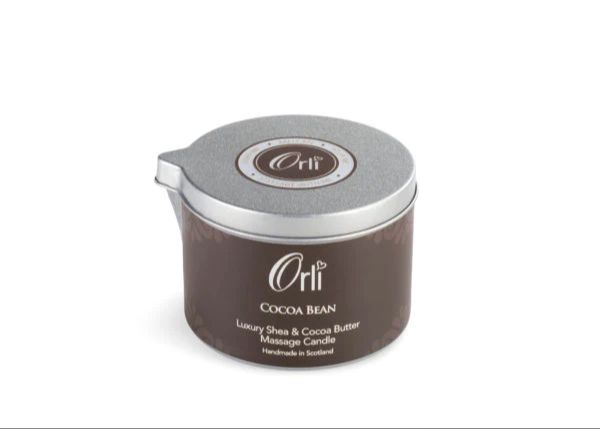Is Soy Wax The Same As Candle Wax?
Soy wax and traditional candle wax are two popular types of wax used in candle making. But what exactly are they and how do they differ?
Soy wax is a vegetable-based wax made from the oil of soybeans (https://www.candlescience.com/learning/what-is-soy-wax/). The soybeans are harvested, cleaned, cracked, de-hulled, and rolled into flakes to extract the oil. The oil then goes through a hydrogenation process to convert it into a solid wax.
Traditional candle wax refers to paraffin wax, a petroleum-based wax made from refining crude oil. The crude oil goes through various filtration and separation processes to isolate the waxy paraffin hydrocarbons used for candles (https://thecandlestudio.com/blog/why-choose-a-soy-wax-candle-the-benefits-of-soy-wax).
This article will take a deeper look at soy wax versus traditional paraffin wax, examining their manufacturing process, composition, benefits, and downsides.
Origins of Soy Wax

The origins of using soy wax for candles dates back to the early 1990s. In 1991, a man named Michael Richards was looking for a cheaper and more environmentally friendly alternative to beeswax for candlemaking. Richards, who worked for the Cargill oil company, pioneered the development of soy wax specifically for candle manufacturing 1.
Richards experimented with hydrogenating soybean oil to create a wax that had a suitable melting point, hardness, and burn properties for candlemaking. The resulting soy wax innovation provided a renewable, American-grown option that was cost-effective and burned cleanly. Cargill patented Richards’ soy wax invention and began producing and marketing soy wax for candles under the name NatureWax in 1992.
Origins of Traditional Candle Wax
Traditional candle wax refers primarily to paraffin wax, beeswax, and tallow. Paraffin wax dates back to the 1850s when it was first developed as an alternative to expensive beeswax. It is made from non-renewable petroleum sources through a distillation process. Beeswax has been used in candle making for thousands of years, dating back to ancient Egypt. It is harvested from honeycomb produced by honey bees. Tallow is animal fat, often from cows or sheep, that was commonly used for candles before paraffin became popular. While paraffin largely replaced other waxes in the early 1900s, there has been resurgence in natural waxes like soy, coconut, and beeswax in recent decades.
Sources:
https://www.marthastewart.com/8061950/candle-wax-type-guide
https://shoparchipelago.com/blogs/blog/types-of-candle-wax
Manufacturing Process
Soy wax is made from hydrogenated soybean oil. Soybeans are first harvested and then undergo a multi-step process to extract the oil. The soybean oil then goes through hydrogenation, which converts the unsaturated oil into a saturated solid wax.
According to this source, the soybeans are first cleaned, cracked, de-hulled, and rolled into flakes to extract the oil. The oil is then partially hydrogenated using a metal catalyst like nickel. This process adds hydrogen to the unsaturated bonds in the oil molecules, converting the liquid oil into a solid wax. The more hydrogenation, the harder the wax becomes. Manufacturers can adjust the level of hydrogenation to achieve the desired wax properties.
Traditional candle waxes like paraffin are derived from petroleum. Crude oil is distilled into factions, one of which contains waxes like paraffin. The wax fractions are filtered and undergo additional chemical processing to produce the different types of paraffin waxes used in candles.
According to this source, paraffin wax is purified through a process called “sweating.” The hot liquid wax is left to cool and release more volatile components. The wax sweats out impurities as it solidifies, leaving behind a more refined crystalline structure. Manufacturers can modify the production process to produce paraffin waxes with different melting points and properties for candle making.
Chemical Composition
The primary component of soy wax is hydrogenated soybean oil. The main chemicals present in hydrogenated soybean oil are palmitic, stearic, oleic, linoleic, and linolenic acids. These fatty acids give soy wax its unique crystalline structure that makes it ideal for container candles.
Traditional candle waxes like paraffin are derived from petroleum. Paraffin wax contains hydrocarbons, which are composed of hydrogen and carbon atoms. The hydrocarbons in paraffin range from C20 to C40, indicating the number of carbon atoms in the molecules. The longer chains are solid at room temperature, making them suitable for candle making. Other chemicals like stearic acid are also added to modify the properties of paraffin wax.
Beeswax, another common candle wax, has a more complex chemical composition. It contains over 300 different compounds, mainly palmitate, palmitoleate, hydroxypalmitate and oleate esters of long-chain fatty alcohols. The variety of chemicals in beeswax contributes to its unique aromatic and burning properties.
Benefits of Soy Wax
Soy wax is a natural and renewable resource since it is made from soybean oil, making it eco-friendly compared to paraffin wax which is a byproduct of petroleum. Soy wax is biodegradable as it is made from plant-based resources, so it does not persist in the environment like paraffin wax (Source). Furthermore, soy wax is non-toxic and does not produce smoke or soot when burning, unlike paraffin candles. Soy candles are cleaner-burning and do not release carcinogens or toxins into the air (Source). Overall, soy wax provides environmental and health benefits compared to traditional candle waxes.
Downsides of Soy Wax
Soy wax does have some disadvantages compared to traditional candle waxes that are worth considering. Two of the main downsides are its higher cost and lower melting point.
Soy wax tends to be more expensive than paraffin wax. According to one source, soy wax can cost twice as much as paraffin per pound (https://www.everythingdawn.com/blogs/news/34785665-the-pros-and-cons-of-soy-wax). The increased cost comes from the specialized production process required to extract and refine soybean oil into wax. This makes soy wax candles usually more expensive for consumers.
Additionally, soy wax has a lower melting point compared to paraffin, generally between 115-125°F. This means soy candles are more prone to melting or losing their shape in warmer environments. Proper candle making techniques can help mitigate this issue, but it remains a disadvantage over paraffin which has a melting point around 135°F. The lower melting point also means soy wax does not retain scents as strongly when lit compared to paraffin.
Benefits of Traditional Wax
Traditional candle waxes like paraffin tend to be less expensive than soy wax. Paraffin wax is a petroleum byproduct, so large quantities are readily available from oil refineries. This makes paraffin an affordable option for candle makers. Soy wax comes from soybeans, which must be grown, harvested, and processed specifically for candle production. The specialized farming and manufacturing process results in a higher price for soy wax.
In addition to cost savings, traditional waxes allow more customization when it comes to scent and color. Paraffin wax and other conventional waxes have excellent fragrance throw, meaning they effectively distribute scent into the air. The wax chemistry binds well with fragrances and provides strong, consistent aroma. Soy wax can sometimes have weaker scent throw unless properly formulated. Paraffin and traditional waxes also accept a wider array of candle dyes. Bright vivid colors are easier to achieve compared to natural soy wax.
Overall, the lower price point and superior ability to carry customized scents and colors are significant benefits of traditional paraffin wax over soy wax.
Downsides of Traditional Wax
One major downside of traditional wax like paraffin is that it’s non-renewable. Paraffin wax is derived from petroleum, a fossil fuel that takes millions of years to form and is not considered a sustainable resource1. Once depleted, petroleum sources cannot be replenished easily. In contrast, soy wax comes from soybeans which can be grown year after year.
Traditional paraffin candles also tend to produce more soot when burned compared to soy wax candles. The soot released from paraffin can dirty surfaces in your home and even trigger respiratory issues in some people. Studies have linked paraffin candle emissions to increased indoor air pollution2. Soy wax has less issues with soot production during burning.
Conclusion
In summary, soy wax and traditional candle waxes like paraffin have some key differences as well as similarities.
Both soy wax and paraffin wax are composed of hydrocarbons. However, soy wax is made from soybean oil while paraffin wax is a petroleum byproduct. From a manufacturing standpoint, soy wax is derived from a renewable resource while paraffin wax relies on fossil fuels.
In terms of performance, soy wax and paraffin burn relatively similarly, providing over 150 hours of burn time. However, soy wax is often perceived as more environmentally friendly and natural compared to petroleum-based paraffin. Soy wax also has a lower melting point, making it easier to work with.
When it comes to scent throw, paraffin wax tends to allow fragrances to linger longer than soy wax. On the other hand, soy wax is better at holding dye color over time. Soy wax also releases less soot and smoke when burning compared to paraffin.
Overall, both soy wax and paraffin wax can produce high-quality candles. Soy wax offers some advantages in terms of environmental sustainability and natural appeal. However, paraffin remains a cost-effective option. The choice often comes down to the manufacturer’s or consumer’s specific preferences and priorities.





